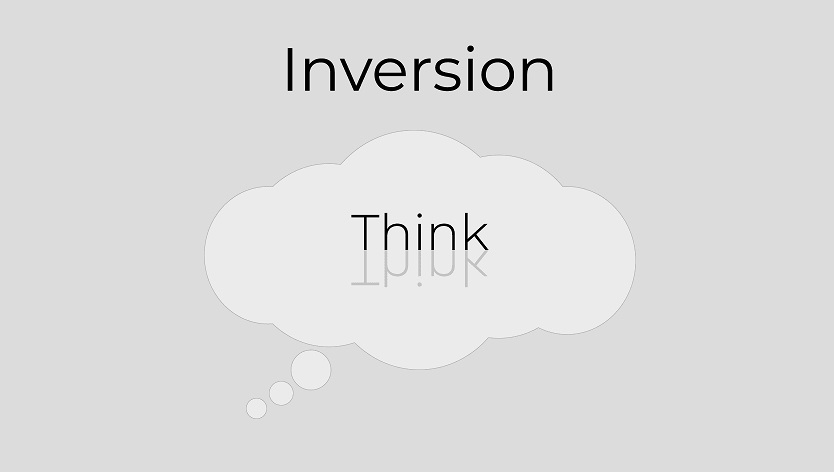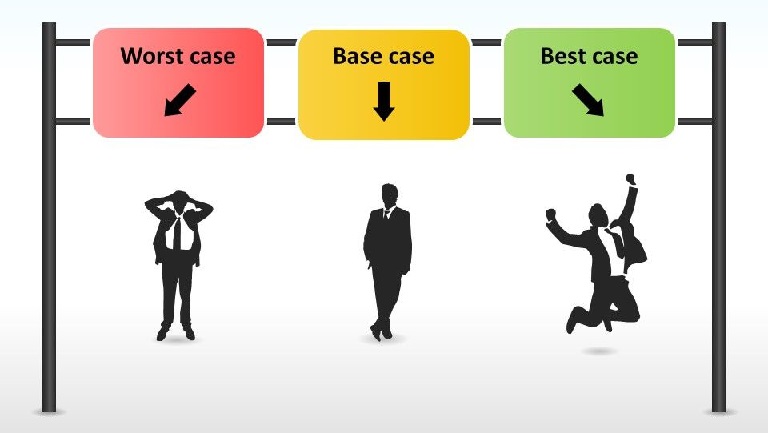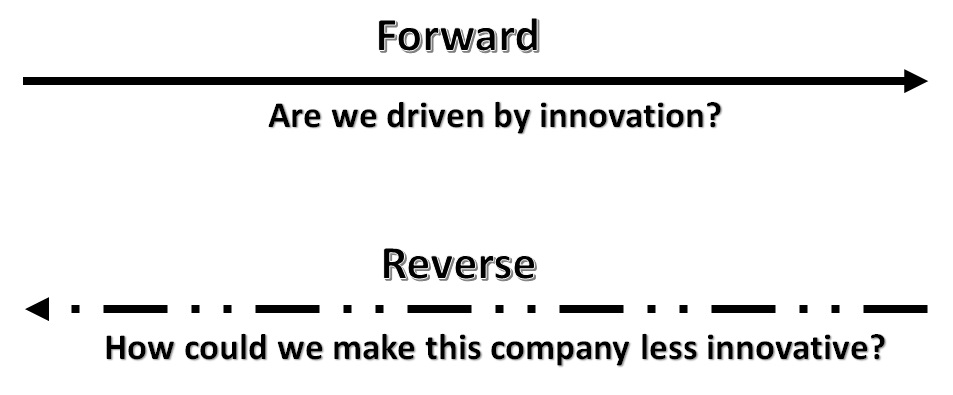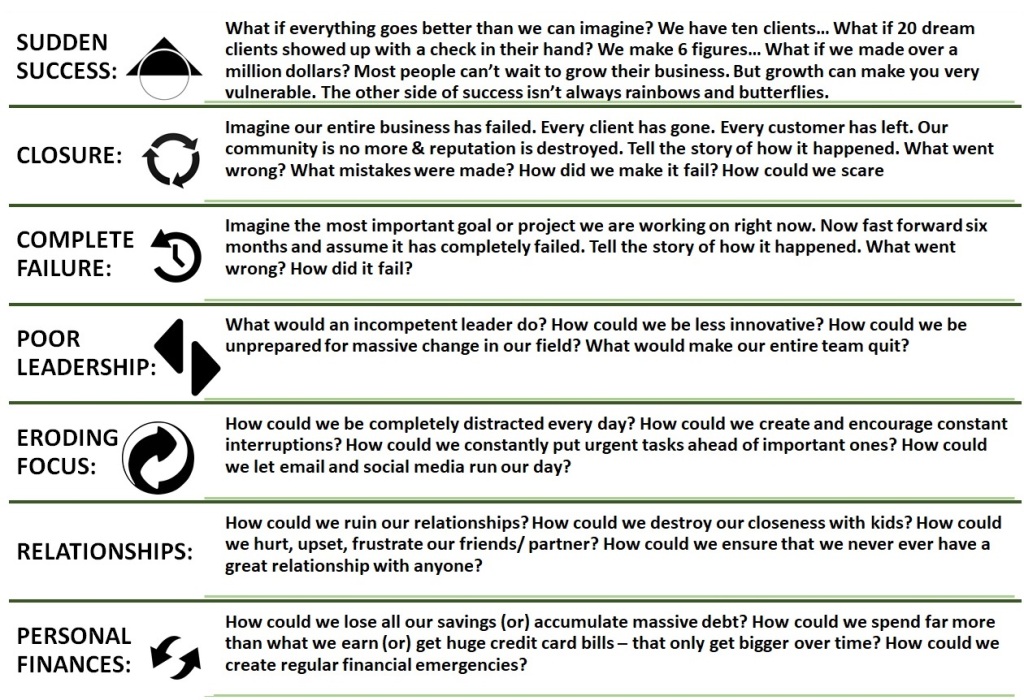
The ancient Stoic philosophers like Marcus Aurelius, Seneca, and Epictetus regularly conducted an exercise known as a premeditatio malorum, which translates to a “premeditation of evils.” The goal of this exercise was to envision the negative things that could happen in life. For example, the Stoics would imagine what it would be like to lose their job and become homeless or to suffer an injury and become paralyzed or to have their reputation ruined and lose their status in society.
The Stoics believed that by imagining the worst-case scenario ahead of time, they could overcome their fears of negative experiences and make better plans to prevent them. While most people were focused on how they could achieve success, the Stoics also considered how they would manage failure. This way of thinking, in which we consider the opposite of what we want, is known as inversion. It is a rare and crucial skill that nearly all great thinkers use to their advantage.
How Great Thinkers Shatter the Status Quo with Inversion
The German mathematician Carl Jacobi made a number of important contributions to different scientific fields during his career. In particular, he was known for his ability to solve hard problems by following a strategy of man muss immer umkehren or, loosely translated, “invert, always invert.” Jacobi believed that one of the best ways to clarify our thinking was to restate math problems in inverse form. He would write down the opposite of the problem he was trying to solve and found that the solution often came to him more easily.
Inversion Vs Reverse Engineering
The Inversion Thinking concept finds its roots in how mathematicians solve complex problems. Look at any problem backward and turn the situation upside down to find the solution. Also, it is not to be confused with reverse engineering.
In reverse engineering we work backward from an achieved solution. For example, if we want to achieve a target of 10 customers, we need to submit 30 proposals, then to give 30 proposals we have to prospect 100 customers and for that every day we should meet 5 customers. This is simple reverse engineering, reversing from a positive result. But in Inversion Thinking, we consider the opposite of what we want. What if the opposite was true? What if I focused on a different side of this situation?

Inversion is a powerful thinking tool because it puts a spotlight on errors and roadblocks that are not obvious at first glance. What if the opposite was true? What if I focused on a different side of this situation? Instead of asking how to do something, we ask how to not do it. Great thinkers, icons, and innovators think forward and backward. Occasionally, they drive their brain in reverse.
This way of thinking can reveal compelling opportunities for innovation. Art provides a good example. One of the biggest musical shifts in the last several decades came from Nirvana, a band that legitimized a whole new genre of music—alternative rock—and whose Nevermind album is memorialized in the Library of Congress as one of the most “culturally, historically or aesthetically important” sound recordings of the 20th century. Nirvana turned the conventions of mainstream rock and pop music completely upside down. Where hair metal was flashy, Nirvana was stripped-down and raw. Inversion is often at the core of great art.
At any given time there is a status quo in society and the artists and innovators who stand out are often the ones who overturn the standard in a compelling way. In a way, the secret to unconventional thinking is just inverting the status quo. This strategy works equally well for other creative pursuits like writing. Many great headlines and titles use the power of inversion to up-end common assumptions.

Success is Overvalued. Avoiding Failure Matters More. This type of inverse logic can be extended to many areas of life. Avoiding mistakes is an under-appreciated way to improve. In most jobs, you can enjoy some degree of success simply by being proactive and reliable—even if you are not particularly smart, fast, or talented in a given area. Sometimes it is more important to consider why people fail in life than why they succeed.
The Benefits of Thinking Forward and Backward
Inversion can be particularly useful in the workplace. Leaders can ask themselves, “What would someone do each day if they were a terrible manager?” Good leaders would likely avoid those things. Similarly, if innovation is a core piece of the business model, we can ask, “How could we make this company less innovative?” Eliminating those barriers and obstacles might help creative ideas arise more quickly. And every marketing department wants to attract new business, but it might be useful to ask, “What would alienate our core customer?” A different point of view can reveal surprising insights. We can learn just as much from identifying what doesn’t work as we can from spotting what does. What are the mistakes, errors, and flubs that we want to avoid? Inversion is not about finding good advice, but rather about finding anti-advice. It teaches us what to avoid.

Some more ways in which inversion can come into play in work and life:
Project Management: . . . . . Failure Premortem. Imagine the most important goal or project we are working on right now. Now fast forward six months and assume the project or goal has failed. Tell the story of how it happened. What went wrong? What mistakes did we make? How did it fail? In other words, think of the main goal and ask, “What could cause this to go horribly wrong?” This strategy is sometimes called the “kill the company” exercise in organizations because the goal is to spell out the exact ways the company could fail. Just like a Premeditation of Evils, the idea is to identify challenges and points of failure so you can develop a plan to prevent them ahead of time.
Productivity: . . . . .. . Most people want to get more done in less time. Applying inversion to productivity we could ask, “What if I wanted to decrease my focus? How do I end up distracted?” The answer to that question may help us discover interruptions we can eliminate to free up more time and energy each day. This strategy is not only effective, but often safer than chasing success. This insight reveals a more general principle: Blindly chasing success can have severe consequences, but preventing failure usually carries very little risk.
Decluttering: . . . . . . . . Marie Kondo, author of the blockbuster best-seller The Life-Changing Magic of Tidying Up, uses inversion to help people declutter their homes. Her famous line is, “We should be choosing what we want to keep, not what we want to get rid of.” In other words, the default should be to give anything away that does not “spark joy” in our life. This shift in mindset inverts decluttering by focusing on what you want to keep rather than what you want to discard.

Relationships: . . . . . . . . .. . . . . What behaviors might ruin a marriage? Lack of trust. Not respecting the other person. Not letting each person have time to be an individual. Spending all of the time on kids and not investing in the relationship together. Not having open communication about money and spending habits. Inverting a good marriage can show us how to avoid a bad one.

Personal Finance: . . . . . . . . .. . . . .Everyone wants to make more money. But what if you inverted the problem? How could you destroy your financial health? Spending more than we earn is a proven path to financial failure. It doesn’t matter how much money we have, the math will never work out over time. Similarly, accumulating debt is a hair-on-fire emergency to be resolved as quickly as possible. And gradually creeping into unchecked shopping and spending habits can lead to self-inflicted financial stress.

Consider the Opposite
Inversion is counterintuitive. It is not obvious to spend time thinking about the opposite of what you want. And yet inversion is a key tool of many great thinkers. Stoic practitioners visualize negative outcomes. Ground-breaking artists invert the status quo. Effective leaders avoid the mistakes that prevent success just as much as they chase the skills that accelerate it.
Inversion can be particularly useful for challenging our own beliefs. It forces us to treat our decisions like a court of law. In court, the jury has to listen to both sides of the argument before making up their mind. Inversion helps to do something similar. What if the evidence disconfirmed what we believe? What if we tried to destroy the views that we cherish? Inversion prevents us from making up our mind after our first conclusion. Some more examples of Inversion Thinking Questions may be:

It is a way to counteract the gravitational pull of confirmation bias. Inversion is an essential skill for leading a logical and rational life. It allows us to step outside our normal patterns of thought and see situations from a different angle. Inversion is different than working backward or “beginning with the end in mind.” Those strategies keep the same goal and approach it from a different direction. Meanwhile, inversion asks you to consider the opposite of your desired result.
Content Curated By: Dr Shoury Kuttappa.

